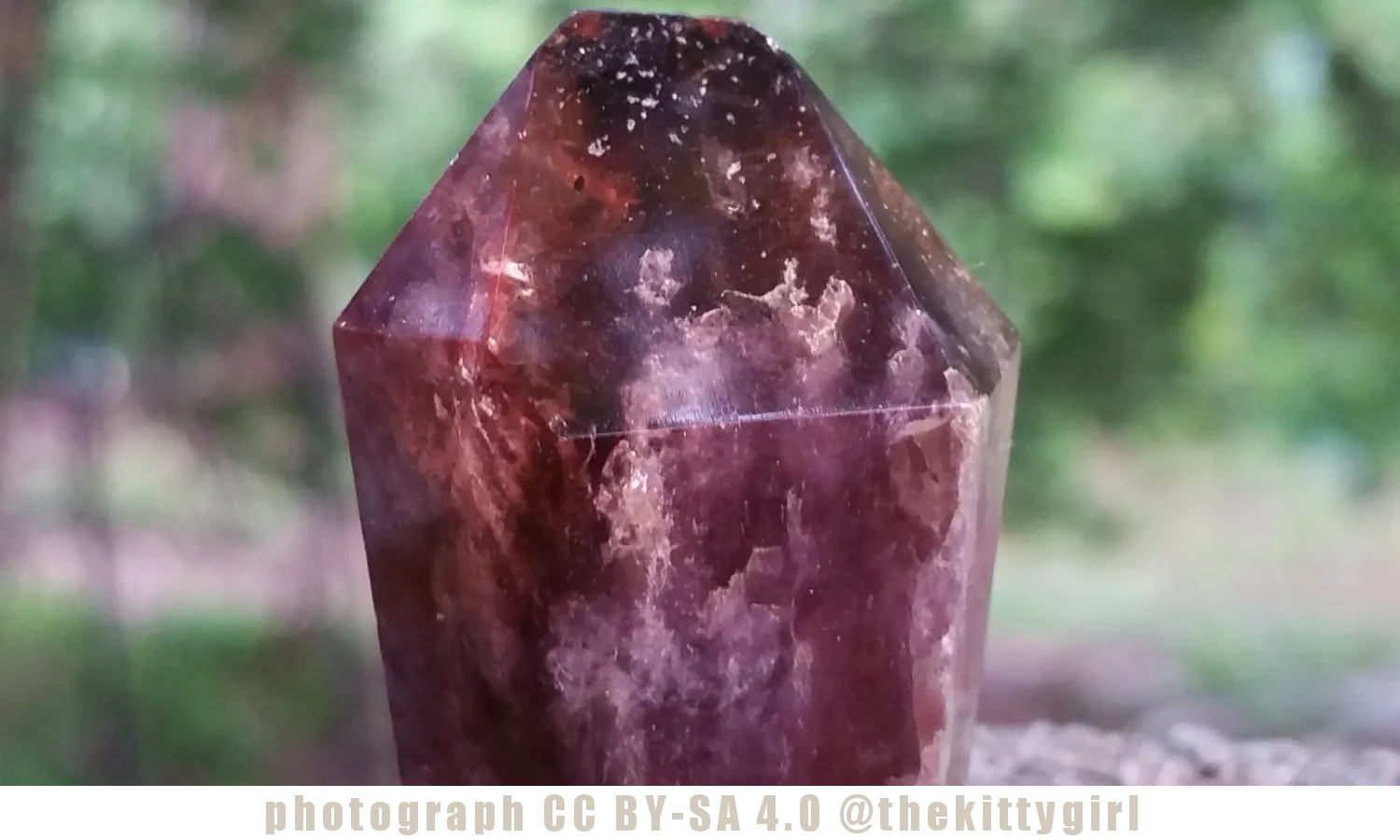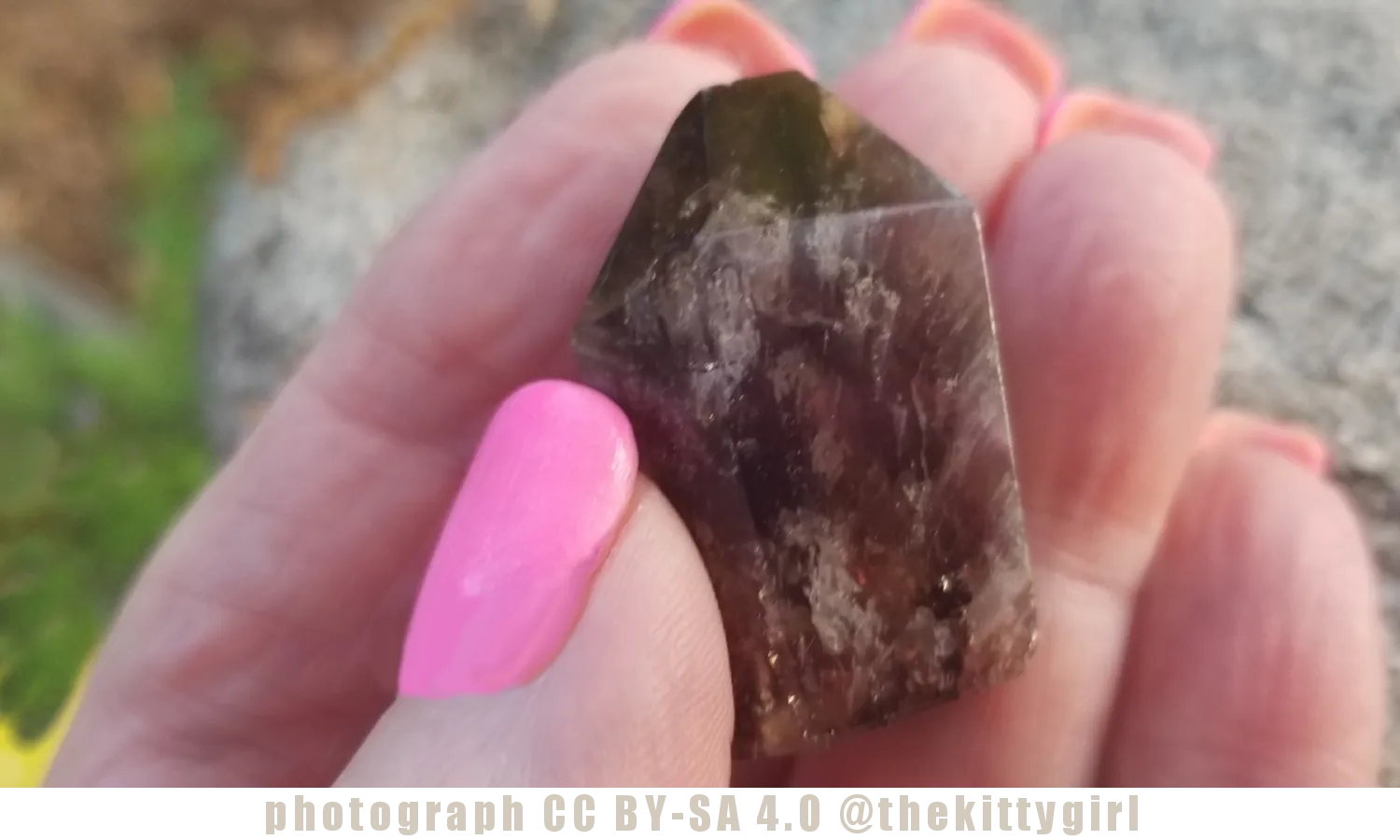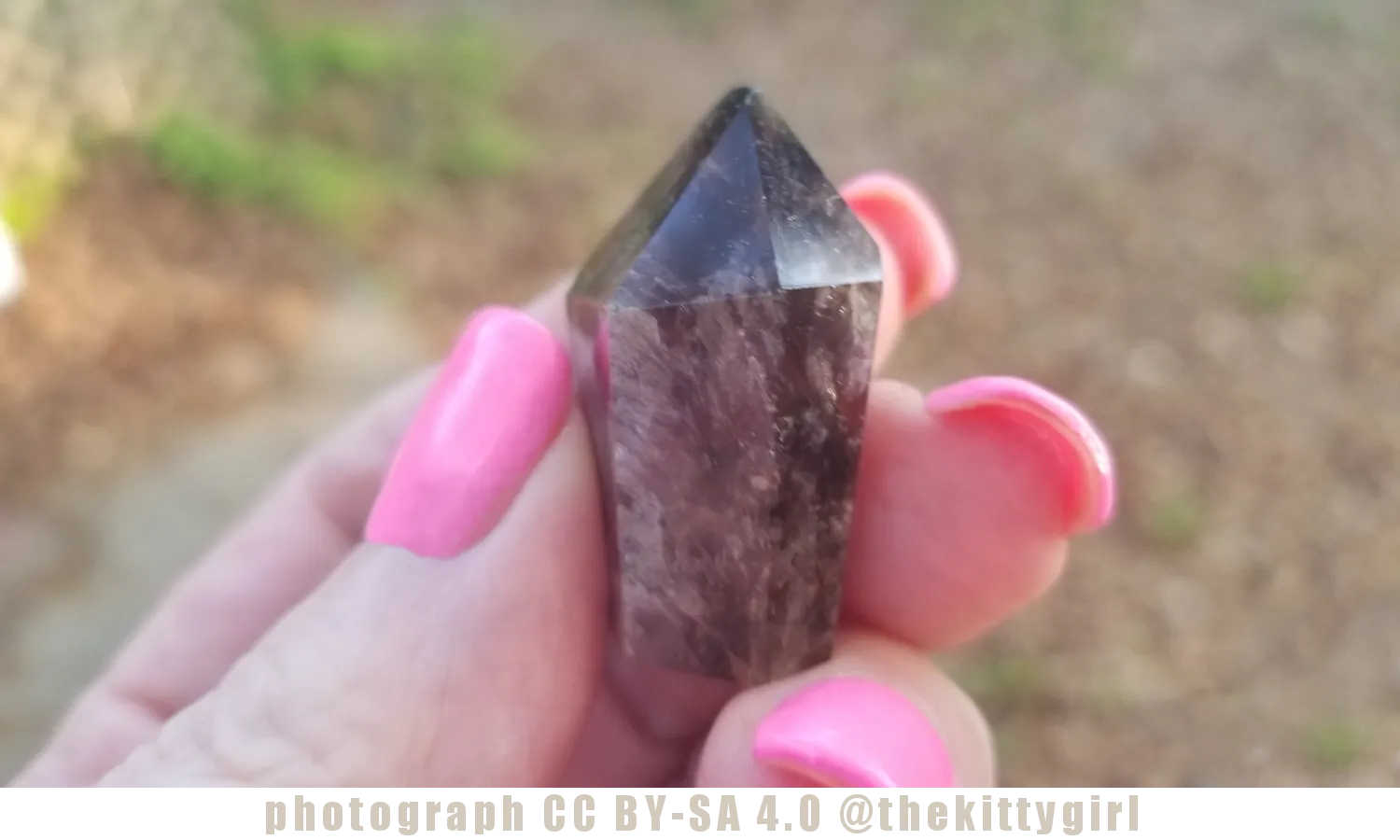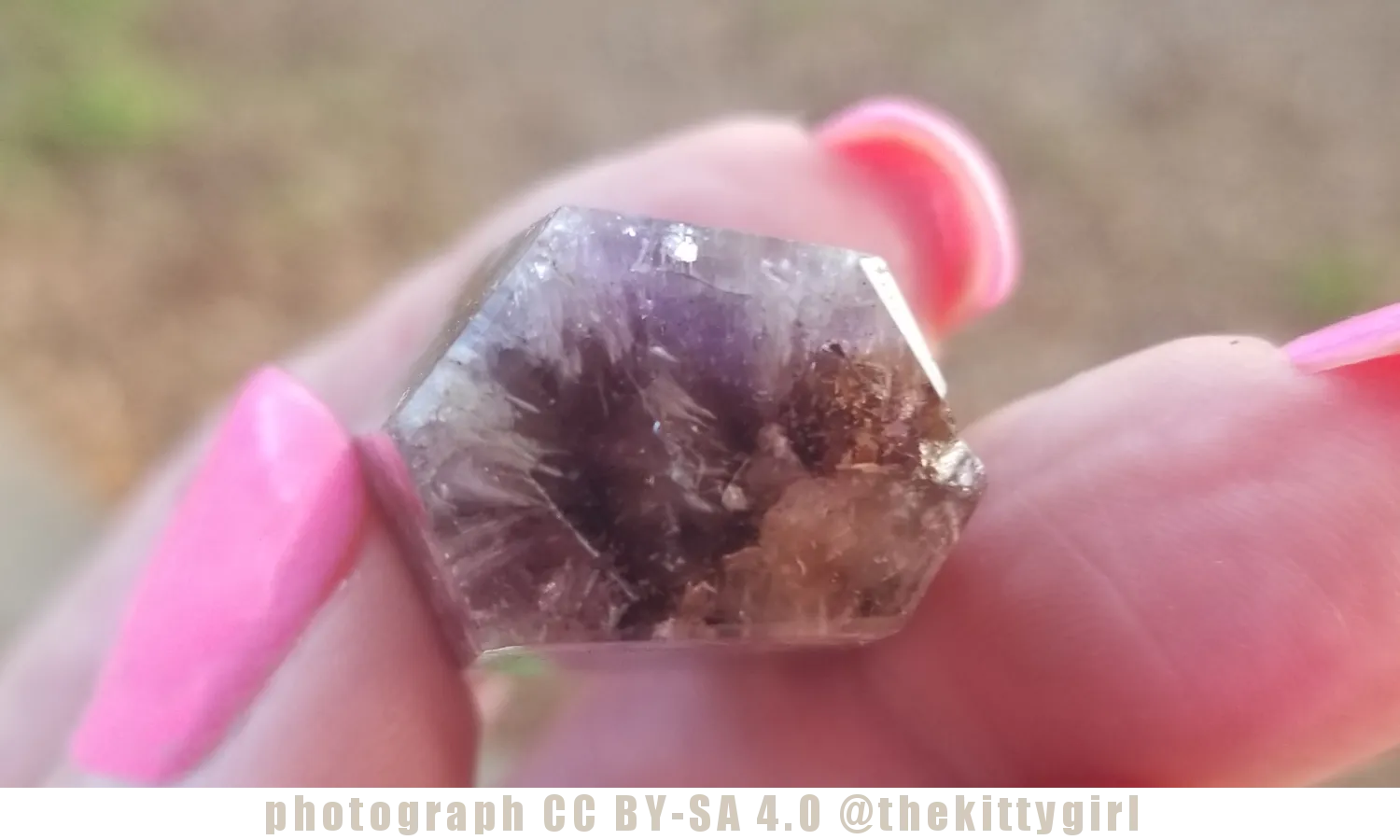Rocks and minerals which contain iron that can be extracted easily and economically are referred to as iron ore. Some rocks and minerals which contain iron, however, also include other materials that make them unsuitable for use as iron ore. One of these is Cacoxenite, identified by the chemical formula Fe24(AlO6)(PO4)17(OH)12 - 75H2O. The name cacoxenite comes from the Greek words κăκός ("bad") and ξένος ("guest") because the phosphorus in cacoxenite make the iron extracted from it of poor quality.

Cacoxenite is often found inside of amethyst because the purple color of amethyst is due to the presence of iron and natural radiation in the vicinity to its formation. Inclusions of cacoxenite tend to "cloud" amethyst that contains it, rendering the amethyst specimens unlikely to be rated as "gem quality" by a professional jeweler.
"Gem quality" usually refers to stones that are relatively clear, free of most inclusions of other material. Beauty is in the eye of the beholder, though, and I think this might make a lovely pendant or ring, especially if executed in a cabochon style (cut flat on bottom with a polished, domed top), and provided that enough of the host amethyst is visible.

For those of us who like having unusual things in our collection, however, having a bit of cacoxenite is a pleasure. I was quite taken by this amethyst crystal when I found it in a shop, and like looking at the fascinating waves of opaque cacoxenite trapped inside this piece!

So much cacoxenite has settled into the bottom of the crystal that there seems to be more of it there than amethyst! From this view into the bottom of the quartz crystal, acicular ("needle-like") cacoxenite crystals can be seen, which is the form the mineral often assumes in nature.

The following view with more subdued lighting drains a bit of the color from the crystal, but shows more of the acicular crystals quite nicely on the right-hand side:

For those who believe in the metaphysical properties of crystals:
Cacoxenite is known to be the stone of ascension, which is believed to raise the awareness and spirituality of the human being by providing a compassionate and unearthly connection with the vast universe. [source]
SOURCES 1 Gemexi.com: Cacoxenite 1 MineralGalleries: Cacoxenite 2 Wikipedia: Iron ore 3 Wikipedia: Cacoxenite

Small Chlorite Crystal
Chlorite Phantom Pyramid • Aqua Aura
Sapphire • Pietersite • Dalmation Stone
Phlogopite • Lepidolite • Muscovite • Dichroic Glass
Goldstone • Aventurine • Amber • Black Star of India
Ruby – Part 1: Crystals • Ruby – Part 2: Jewelry • Larimar
Citrine Crystal • Amethyst Crystal • Kitty Geode
Phoenix Crystal • Barbeque & Amethysts
Salt Lamps • Trilobite • Arrowhead
Garden Quartz, freeform • Granite Quarry № 2 • Apophyllite
Rocks from Space! • Quartz Rock: Raw versus Polished
Chrysocolla • Tourmaline • Bornite • Goethite • Small Quartz Crystal
Smoky Quartz • Tibetan Quartz • Amazonite Beads • Zoisite
Rutilated Quartz • Garnet • Amazonite Sphere • Lapis Lazuli Mala
Amethyst Point • How Rocks Get Their Color • Red Jasper
Ring, Ring! Amethyst Calling! • Lapis Lazuli • Turitella Agate






27-Apr-2021
Return from Amethyst with Cacoxenite to 𝕜𝕚𝕥𝕥𝕪's Web3 Blog

